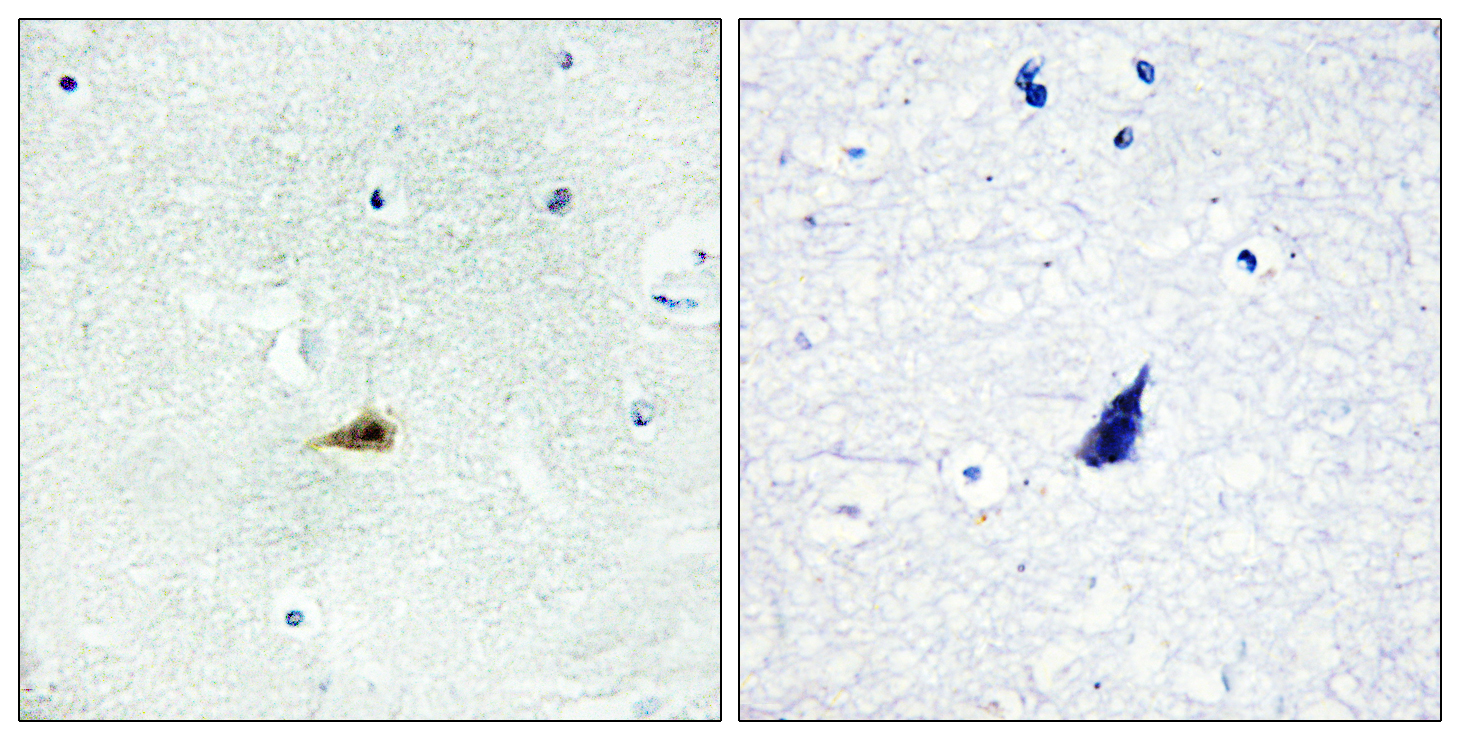SMRTe Polyclonal Antibody
- Catalog No.:YT4346
- Applications:IHC;IF;WB;ELISA
- Reactivity:Human;Mouse
- Target:
- SMRTe
- Fields:
- >>Notch signaling pathway;>>Epstein-Barr virus infection
- Gene Name:
- NCOR2
- Protein Name:
- Nuclear receptor corepressor 2
- Human Gene Id:
- 9612
- Human Swiss Prot No:
- Q9Y618
- Mouse Swiss Prot No:
- Q9WU42
- Immunogen:
- The antiserum was produced against synthesized peptide derived from human NCOR2. AA range:511-560
- Specificity:
- SMRTe Polyclonal Antibody detects endogenous levels of SMRTe protein.
- Formulation:
- Liquid in PBS containing 50% glycerol, 0.5% BSA and 0.02% sodium azide.
- Source:
- Polyclonal, Rabbit,IgG
- Dilution:
- WB 1:500-2000 IHC 1:100 - 1:300. IF 1:200 - 1:1000. ELISA: 1:20000. Not yet tested in other applications.
- Purification:
- The antibody was affinity-purified from rabbit antiserum by affinity-chromatography using epitope-specific immunogen.
- Concentration:
- 1 mg/ml
- Storage Stability:
- -15°C to -25°C/1 year(Do not lower than -25°C)
- Other Name:
- NCOR2;CTG26;Nuclear receptor corepressor 2;N-CoR2;CTG repeat protein 26;SMAP270;Silencing mediator of retinoic acid and thyroid hormone receptor;SMRT;T3 receptor-associating factor;TRAC;Thyroid-; retinoic-acid-receptor-associated
- Observed Band(KD):
- 270kD
- Background:
- This gene encodes a nuclear receptor co-repressor that mediates transcriptional silencing of certain target genes. The encoded protein is a member of a family of thyroid hormone- and retinoic acid receptor-associated co-repressors. This protein acts as part of a multisubunit complex which includes histone deacetylases to modify chromatin structure that prevents basal transcriptional activity of target genes. Aberrant expression of this gene is associated with certain cancers. Alternate splicing results in multiple transcript variants encoding different isoforms.[provided by RefSeq, Apr 2011],
- Function:
- domain:The N-terminal region contains repression functions that are divided into three independent repression domains (RD1, RD2 and RD3). The C-terminal region contains the nuclear receptor-interacting domains that are divided in two separate interaction domains (ID1 and ID2).,domain:The two interaction domains (ID) contain a conserved sequence referred to as the CORNR box. This motif is required and sufficient to permit binding to unligated TR and RARS. Sequences flanking the CORNR box determine nuclear hormone receptor specificity.,function:Mediates the transcriptional repression activity of some nuclear receptors by promoting chromatin condensation, thus preventing access of the basal transcription. Isoform 1 and isoform 5 have different affinities for different nuclear receptors.,induction:Regulated during cell cycle progression.,sequence caution:Contaminating sequence. Sequence of u
- Subcellular Location:
- Nucleus.
- Expression:
- Ubiquitous. High levels of expression are detected in lung, spleen and brain.
- June 19-2018
- WESTERN IMMUNOBLOTTING PROTOCOL
- June 19-2018
- IMMUNOHISTOCHEMISTRY-PARAFFIN PROTOCOL
- June 19-2018
- IMMUNOFLUORESCENCE PROTOCOL
- September 08-2020
- FLOW-CYTOMEYRT-PROTOCOL
- May 20-2022
- Cell-Based ELISA│解您多样本WB检测之困扰
- July 13-2018
- CELL-BASED-ELISA-PROTOCOL-FOR-ACETYL-PROTEIN
- July 13-2018
- CELL-BASED-ELISA-PROTOCOL-FOR-PHOSPHO-PROTEIN
- July 13-2018
- Antibody-FAQs
- Products Images

- Immunofluorescence analysis of A549 cells, using NCOR2 Antibody. The picture on the right is blocked with the synthesized peptide.

- Immunohistochemistry analysis of paraffin-embedded human brain tissue, using NCOR2 Antibody. The picture on the right is blocked with the synthesized peptide.



